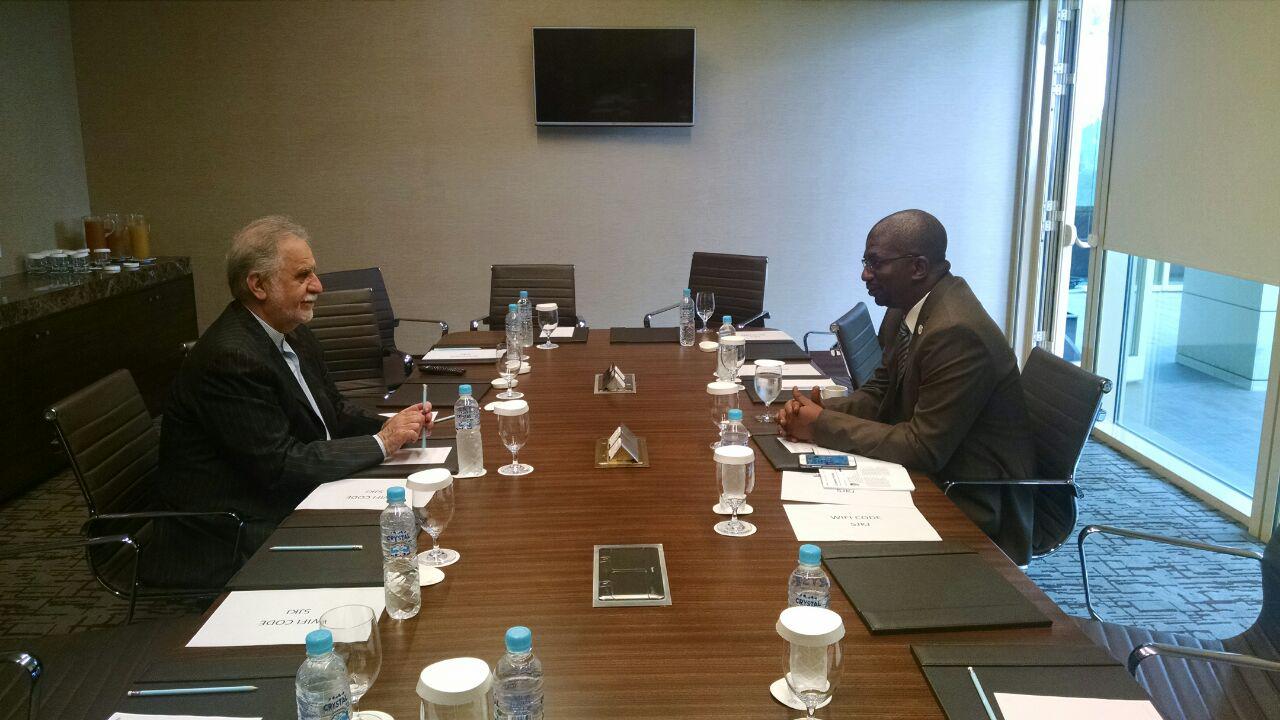The final feasibility report on bauxite extraction in Guinea-Conakry was approved by Iranian and Guinean officials in Tehran on Tuesday.
Meeting at Iranian Mines and Mining Industries Development and Renovation Organization’s headquarters in the Iranian capital, IMIDRO Chairman Mehdi Karbasian and Guinea's Minister of Mines and Geology Abdoulaye Magassouba approved the methods proposed by German consultants DMT GmBH to get the project going, finance it and reduce operational costs, IMIDRO's website reported.
As per the study, the Guinean government is going to hold an international tender for extraction and operation of the mine.
The project will also be funded by the Islamic Development Bank, an international Islamic financial institution based in Saudi Arabia. The bank has AAA credit ratings from Standard & Poor’s, Moody’s, and Fitch.
According to Magassouba, Guinea is home to 4 billion tons of proven bauxite reserves and the mineral zone commissioned to the Societé des Bauxites de Dabola-Tougue–the joint Iranian-Guinean company–holds over 70 million tons of the mineral.
Iran holds a 51% stake in the bauxite project, according to a contract signed in 1992. The partnership with the Guinean government was renewed back in 2015 for another 25 years.
According to Bloomberg, Iran was set to build a pipeline in the African country to annually transport 4 million tons of bauxite to Conakry Port for shipment. IMIDRO declined to comment on the pipeline’s construction process.
Plans to exploit Guinea’s bauxite mines were stalled for decades amid lack of transportation infrastructure and obstacles generated by economic sanctions against Iran. The Iranian government moved fast to resume work, following the removal of international sanctions over its nuclear program, and is now expected to further expedite the process as feasibility studies have been conducted.
According to Karbasian, who is also deputy minister of mining, industries, and trade, two-thirds of the domestic aluminum industry's demand for raw material are met by imports.
Bauxite procurement has always been the Achilles’ heel of Iranian aluminum industry. The country’s only source of bauxite is Jajarm Mine in the city of Jajarm in North Khorasan Province with reserves of less than 20 million tons. Therefore, the industry is underperforming, using only about 60% of the 470,000-ton per year aluminum ingot production capacity.
Iran’s three major aluminum producers produced an aggregate of 293,988 tons of ingots in the last fiscal year (March 2016-17), registering a 1.38% decline year-on-year.
Iran Aluminum Company produced 135,411 tons, Hormozal Aluminum Company 97,607 tons and Almahdi Aluminum Company 60,970 tons.
Iran plans to produce 1.5 million tons of aluminum ingots per year, as stipulated in the 20-Year Vision Plant (2005-25).
To realize this ambitious target, Karbasian says, more than $10 billion of investment are needed.
According to the Iranian Syndicate of Aluminum Industries, producers are also weighing the options of direct alumina imports from major global producers such as Australia and India.
Bauxite and alumina represent the first two links in the value chain on the way to aluminum production. Bauxite is the most common raw material used to produce alumina for aluminum metal production. The white powder, alumina, is produced by the refining of bauxite.


